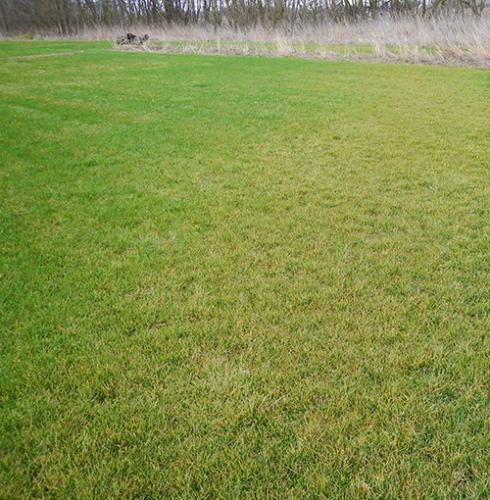Will my turf recover from recent flooding?
Recent rainfall events caused flooding on golf courses, lawns and other turf areas. Depending on how long the turf was submerged and whether soil deposition occurred will determine whether turf survives.

Heavy rain across many portions of Michigan in the last week resulted in localized flooding. Turf near streams and rivers and low-lying areas was under feet of water at least temporarily. In many instances, flooding during spring results in minimal damage to turfgrass. Factors that determine turf survival under water include turfgrass species, submergence duration, submergence depth, water temperature and light intensity.
Turfgrass species differ in their ability to survive flooding. Unfortunately, there are no hard fast numbers such as Kentucky bluegrass will survive five days and creeping bentgrass 15 days under water. Instead, species have been assigned relative submersion tolerance ratings: creeping bentgrass–excellent; Kentucky bluegrass–medium; Poa annua and perennial ryegrass–fair.
As submergence depth increases, the potential for injury increases. If the leaf tissue is above the water line–even just a little bit–the turf will probably survive. On golf courses, many have observed creeping bentgrass floating on the edge and even growing out into a lake. This is a perfect example of turf surviving when partially submerged.
The final two factors affecting turf survival are water temperature and light intensity. Flooding in the spring when temperatures are relatively cool seldom results in death in comparison to the summer when temperatures are high and turf can be killed when it’s submerged for even a short time.
Flooding may cause the turf to turn yellow or brown. The discoloration is related to the turf losing its ability to take up nutrients. It doesn’t take long once turf is submerged for soil oxygen levels to decline and root hairs to begin to die. As the root system becomes impaired, nutrient extraction and water uptake will be limited. Keep this in mind once the water has receded as the turf may benefit from a light fertilizer application.

To assess if submersion has caused injury, Michigan State University Extension advises extracting several plants from the flooded site and cutting a horizontal cross section through the crown. If the crown is white and firm, it has survived. If the crown is brown and mushy, it’s dead, so time to develop a reestablishment plan.
Finally, for those areas that were flooded due to a stream or river overflowing a bank, you are probably dealing with silt or soil deposition. Removal of soil deposition can be difficult and seeding into the deposited soil can be an option. Once you’ve successfully reestablished soil, cultivation such as core aeration or slicing will benefit the turf by breaking through deposited soil layers to facilitate rooting and water infiltration.



 Print
Print Email
Email




